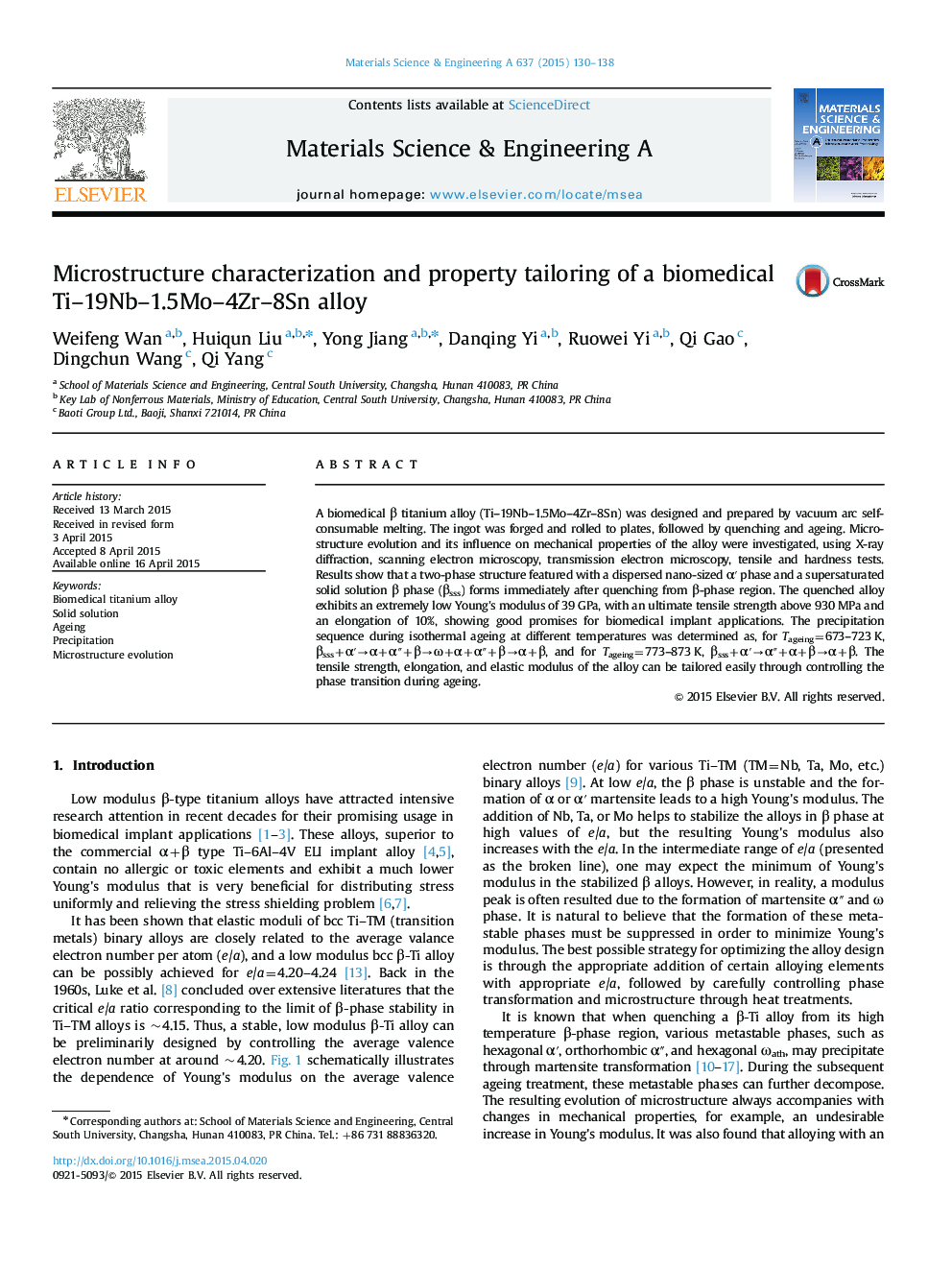| Article ID | Journal | Published Year | Pages | File Type |
|---|---|---|---|---|
| 1574381 | Materials Science and Engineering: A | 2015 | 9 Pages |
Abstract
A biomedical β titanium alloy (Ti-19Nb-1.5Mo-4Zr-8Sn) was designed and prepared by vacuum arc self-consumable melting. The ingot was forged and rolled to plates, followed by quenching and ageing. Microstructure evolution and its influence on mechanical properties of the alloy were investigated, using X-ray diffraction, scanning electron microscopy, transmission electron microscopy, tensile and hardness tests. Results show that a two-phase structure featured with a dispersed nano-sized αⲠphase and a supersaturated solid solution β phase (βsss) forms immediately after quenching from β-phase region. The quenched alloy exhibits an extremely low Young's modulus of 39 GPa, with an ultimate tensile strength above 930 MPa and an elongation of 10%, showing good promises for biomedical implant applications. The precipitation sequence during isothermal ageing at different temperatures was determined as, for Tageing=673-723 K, βsss+αâ²âα+αâ³+βâÏ+α+αâ³+βâα+β, and for Tageing=773-873 K, βsss+αâ²âαâ³+α+βâα+β. The tensile strength, elongation, and elastic modulus of the alloy can be tailored easily through controlling the phase transition during ageing.
Related Topics
Physical Sciences and Engineering
Materials Science
Materials Science (General)
Authors
Weifeng Wan, Huiqun Liu, Yong Jiang, Danqing Yi, Ruowei Yi, Qi Gao, Dingchun Wang, Qi Yang,
